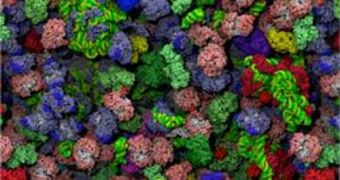Strangely enough, while Hollywood is usually dismissed by the scientific community for its total lack of connection with real knowledge, its technology could mean a boost for science, and especially for molecular biology. Experts believe that the technology used to animate movies such as the blockbuster Shrek could in the near future also help molecular biologists model various cellular components and their interactions. This may help test numerous existing hypotheses, or even lead scientists to creating new ones, Nature News reports.
The announcement was made this month at the meeting for the American Society of Cell Biology, which took place in San Diego. “We want to be able to make predictions. At the very least we want our models to reproduce known behaviors,” said University of Iowa in Iowa City scientist Adrian Elcock. The expert is already engaged in virtual cell research, simulating the movements of proteins, enzymes and other big molecules inside of them. The work was founded on established scientific knowledge of these molecules – about 50 of the most common ones in the bacteria Escherichia coli – but the model also brings something new to the table.
It is used to simulate all the possibilities that these proteins could display when it comes to interacting among themselves. This could, in the near future, lead to a more accurate understanding of their overall relationships. Scientists hope that, at some point, they will be able to include sufficient amounts of data in the models so as to make new discoveries, as in infer the existence of other molecules, and how they fit in the general schematic of a cell's function. Thus far, Elcock was able to demonstrate that the green fluorescent protein (GFP), the marker generally used for such lab studies, indeed diffuses 10 times slower in the actual cell than in the test tube. This is due to the “crowd” of molecules inside the cells.
“Animation is seen as more eye candy than anything. That could change,” adds Harvard Medical School in Boston expert Janet Iwasa. The thing is, experts say, that the human brain is not well-equipped to memorize and fully understand the complex interactions that take place between the molecules inside cells. “Our intuition is fragile in this regard. We need a tool to help us understand,” explains University of Washington in Friday Harbor professor Jonathan Alberts. “All we really need to do, we hope, is get things about right, and we will see some emergent properties,” he says.

 14 DAY TRIAL //
14 DAY TRIAL //